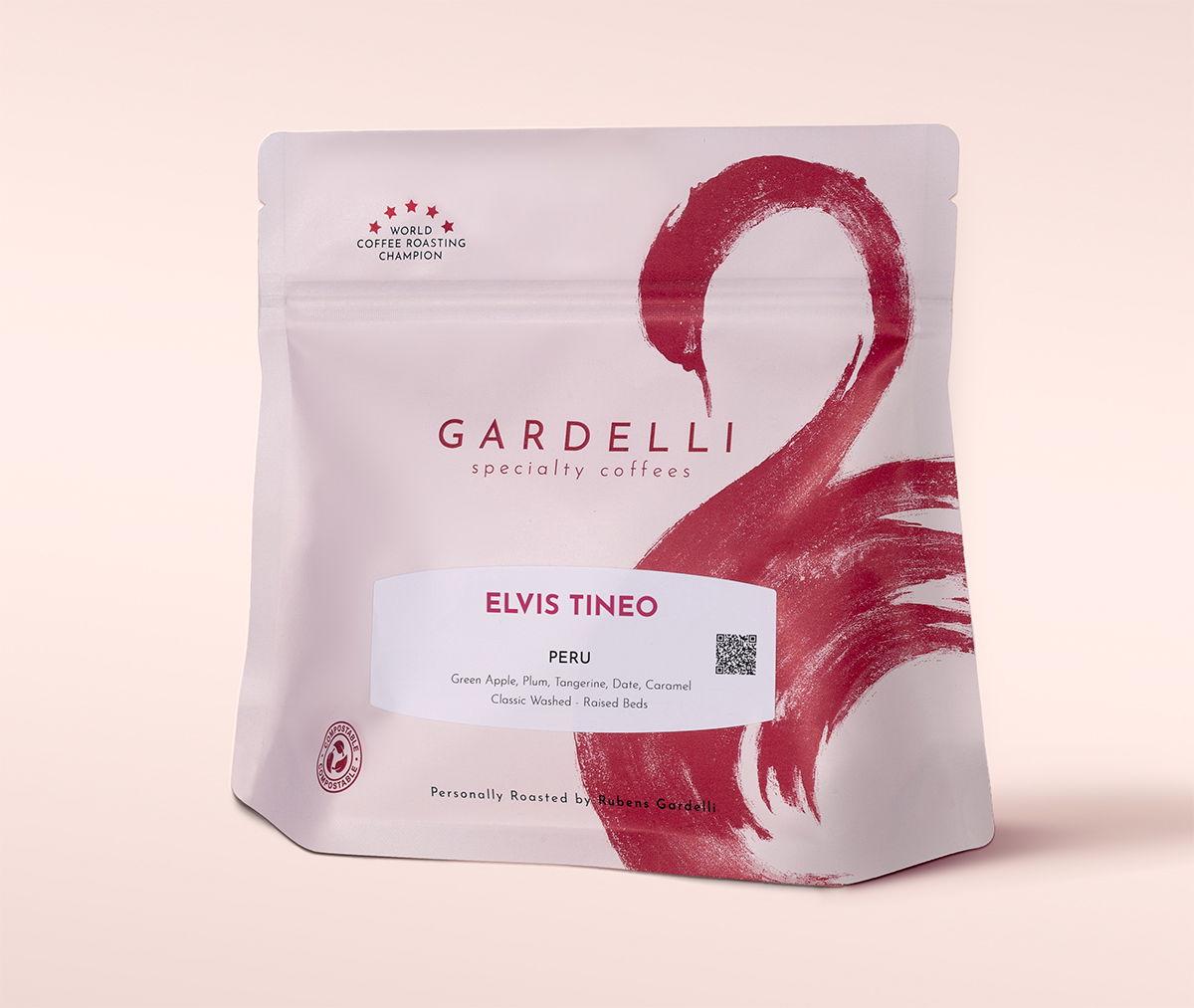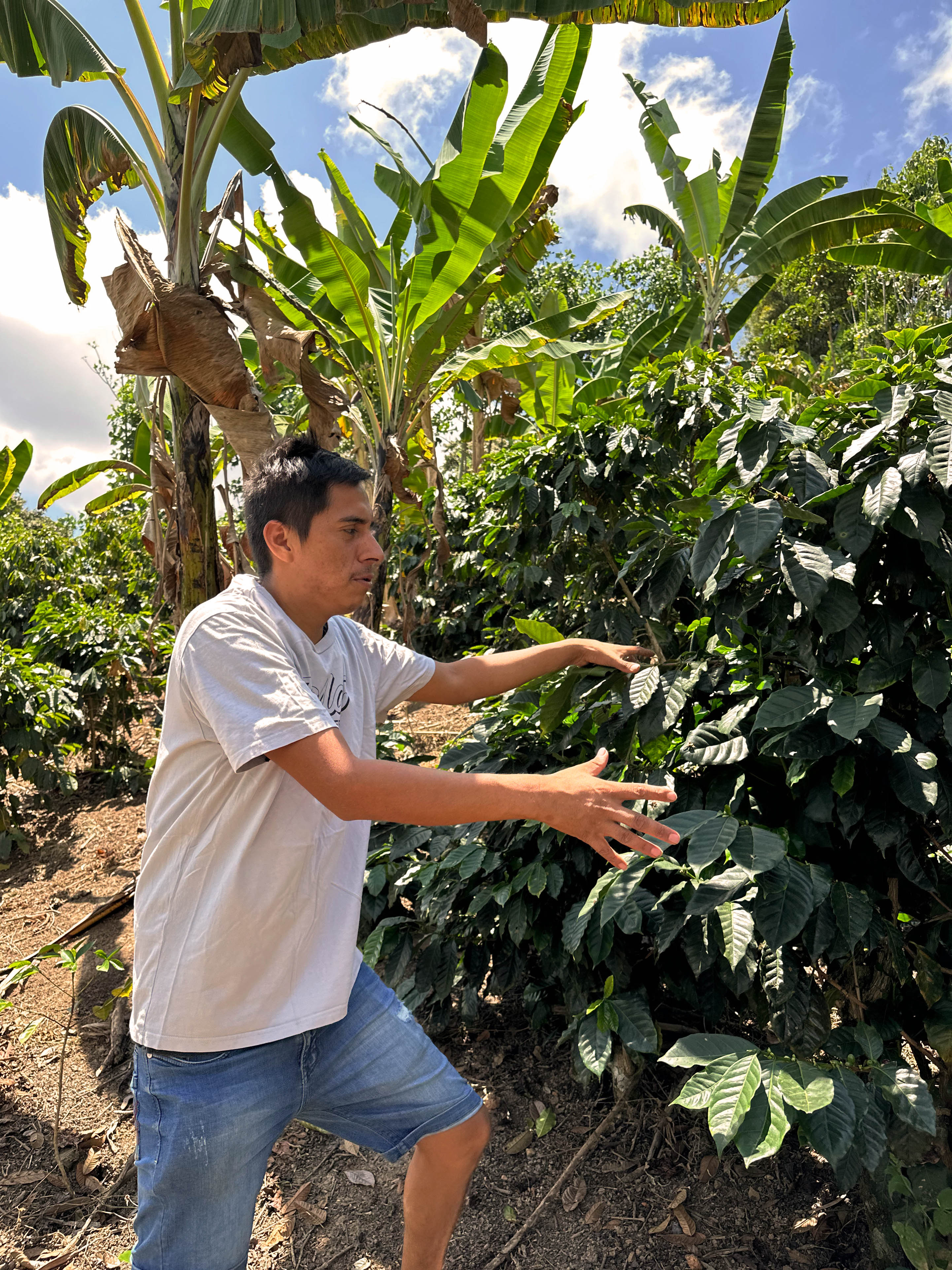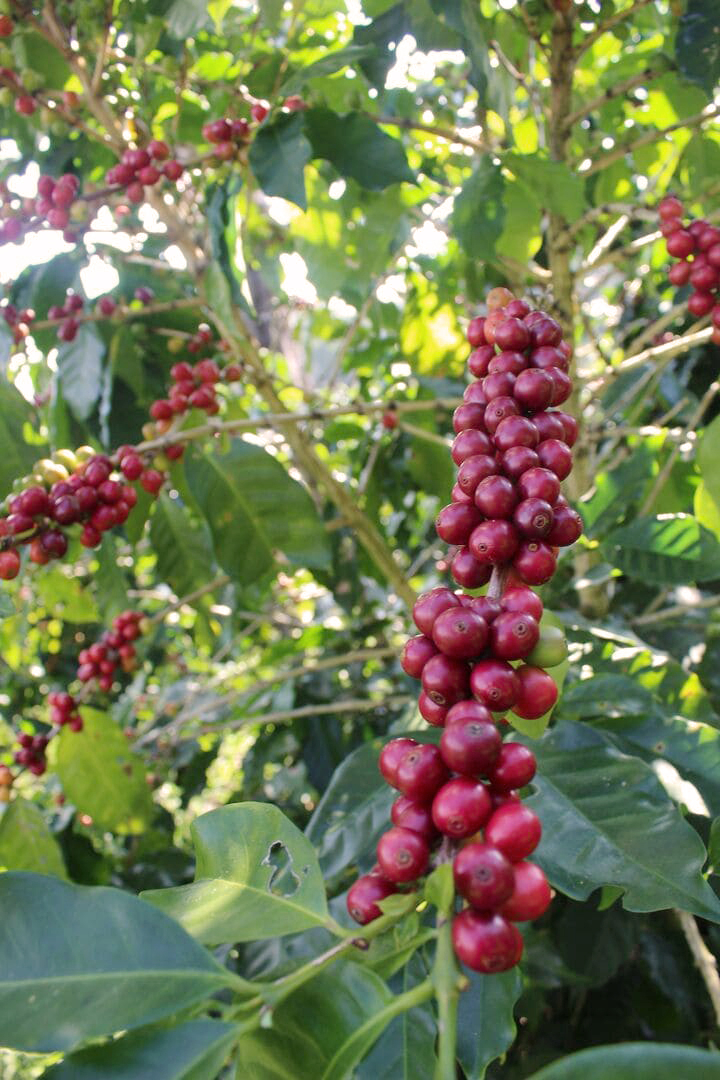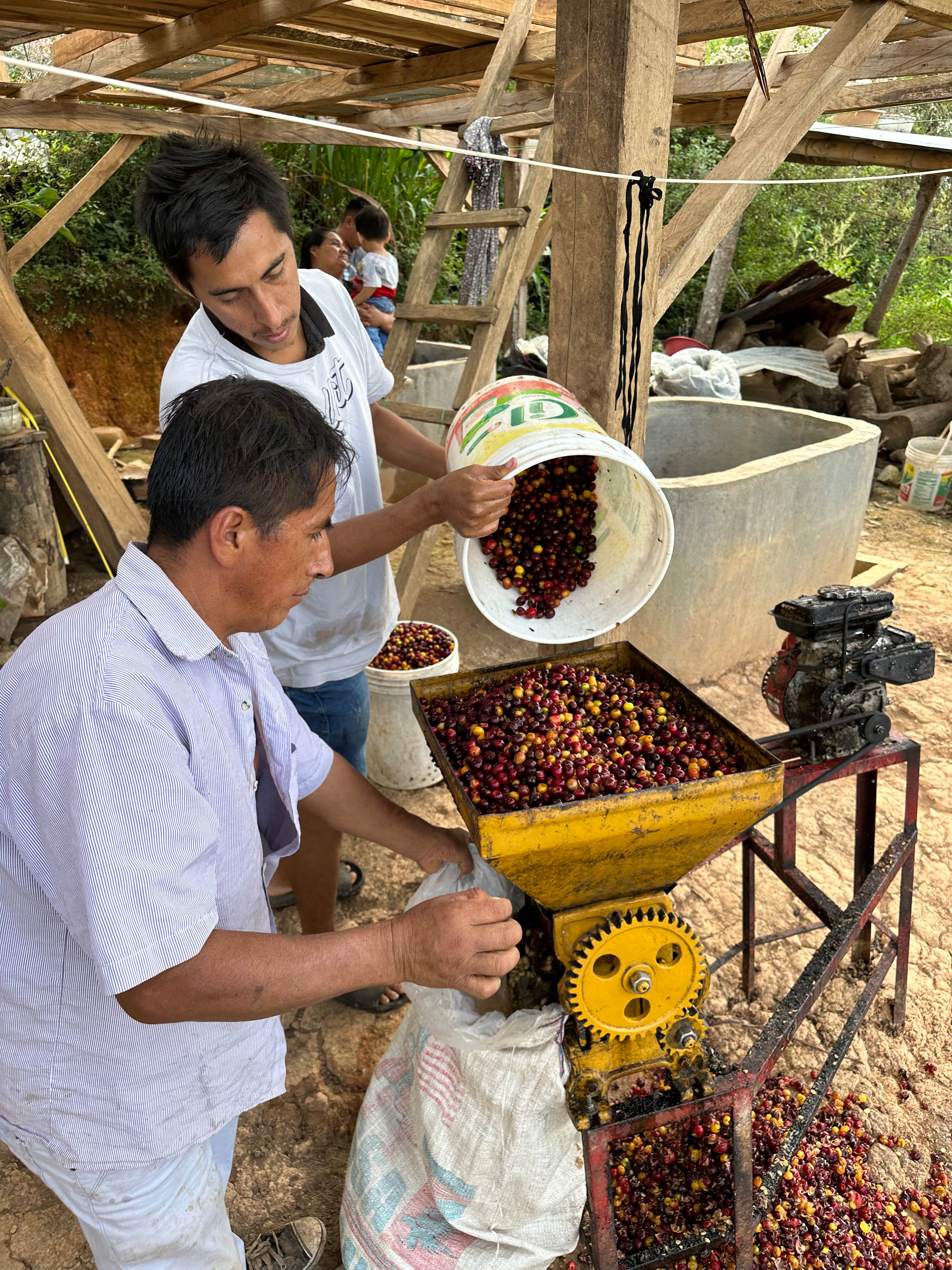












Peru
Cup Notes: Green Apple, Plum, Tangerine, Date, Caramel
A Peruvian lot that offers a well-balanced cup with a syrupy body, bright acidity, and a smooth, fruity flavour reminiscent of the finest Kenyan coffees, with a lingering sweetness.
Suggested for espresso and filter
when we roast
We freshly roast to order all coffees on Monday, Wednesday and Friday (excluding national holidays), and ship the same day! Cut-off time is 11:59pm (UTC+1) of the day before the roast day. *We only ship whole beans*
Located in the Jaén area of northern Peru, La Naranja is a three-hectare coffee farm owned by Elvis Tineo. The name of the farm means “the orange”: it has received that name from the orange trees that grow among its coffee plants. The farm has been Elvis’s passion since he took it over in 2016. Originally part of his family’s six-hectare estate, La Naranja now stands as a testament to his dedication to the production of high-quality coffee.
Elvis cultivates Caturra, Catimor, and Catuai varieties, processing them using the traditional washed and natural methods, as well as anaerobic fermentation to develop unique flavour profiles. Despite challenges like droughts and coffee rust, he employs sustainable farming practices to maintain soil health and productivity. Producing around 40 quintals annually, Elvis remains committed to refining his craft and preserving his family’s coffee-growing heritage.
His vision is to manage La Naranja as a sustainable enterprise, continually improving quality while honouring the traditions passed down through generations.

CATUAI
Catuai is a cross between highly productive Mundo Novo and compact Caturra, bred by the Instituto Agronomico (IAC) of Sao Paulo State in Campinas, Brazil in 1949. It was released in 1972 after pedigree selection (selection of individual plants through successive generations) and is widely cultivated up to this date.
Outside of Brazil, it was first introduced in Guatemala in 1970, even before the release in Brazil. Currently Catuai accounts for around 20% of the country's coffee total production.
It is also widely cultivated in Honduras, where it was introduced in 1979 after extensive tests by Instituto Hondureño del Café (IHCAFÉ). It was released commercially in 1983, after IHCAFÉ selected two lines for planting. In Honduras today, Catuai accounts for nearly half of the Arabica coffee in cultivation. Researchers at IHCAFÉ are actively engaged in breeding with Catuai and creating hybrid crosses between Catuai and Timor Hybrid lines.
Catuai is also economically important in Costa Rica, where a yellow-fruiting Catuai was introduced in 1985, and its descendants have spread widely through the country.
It has a negligible presence in other Central American countries.
The plant is highly productive compared to Bourbon, in part because of its small size, which allows plants to be closely spaced - it can be planted at nearly double the density compared to other varieties. Because of this characteristic, the introduction of Catuai partly led to the intensification of full-sun coffee cultivation in Central America in the 1970s and 1980s. The plant’s shape also makes it relatively easy to apply pest and disease treatments. It is characterised by great vigour and low height, while it is less compact than Caturra. There are yellow-fruited and red-fruited types, with numerous variation at present. Catuai's downside is that it is highly susceptible to coffee leaf rust.
PACHE
Pache is a natural mutation of the Typica variety related to a single gene that causes the plant to grow smaller (dwarfism), which allows it to be planted more densely and achieve higher yields. The variety was discovered in 1949 in Guatemala on the Brito farm in Santa Cruz Naranjo, Santa Rosa. From there it was selected through mass selection: a group of individuals were selected based on their superior performance, seed from these plants was bulked to form a new generation, and then the process was repeated. Mass selection took place across private farms in Guatemala, and from there spread to other regions and countries.

Washed coffees showcase solely the bean. They let you taste you what’s on the inside, not the outside. Washed coffees depend almost 100% on the bean having absorbed enough natural sugars and nutrients during its growing cycle. This means the varietal, soil, weather, ripeness, fermentation, washing, and drying are absolutely key.
Washed coffees reflect both the science of growing the perfect coffee bean and the fact that farmers are an integral part of crafting the taste of a coffee bean. When looking at washed coffees, it becomes apparent that the country of origin and environmental conditions play a vital role in adding to the flavour.
During wet processing, the pulp (i.e.the exocarp and a part of the mesocarp) is removed mechanically. The remaining mesocarp, called mucilage, sticks to the parchment and is also removed before drying. During this process, the sugars present in the mucilage are removed through natural fermentation or mechanical scrubbing. Mucilage is insoluble in water and clings to parchment too strongly to be removed by simple washing. Mucilage can be removed by fermentation followed by washing or by strong friction in machines called mucilage removers. Fermentation can be done by stacking the coffee outside or placing it under water and allowing nature to take its course. After the sugars are removed, the beans then can be taken through a secondary washing to remove any additional debris, or taken immediately to the beds for drying.
